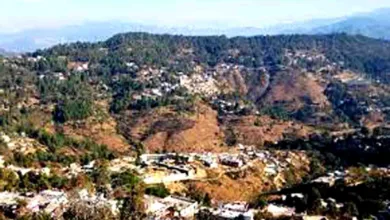District Panchayats need to facilitate economic activities to sustain economically

GUEST COLUMN
 Vipul Dhasmana
Vipul Dhasmana
Panchayati Raj was formalised in 1992 by the 73rd amendment to the Indian Constitution. This local self-government in India is based upon the traditional Panchayat system. Panchayati Raj now functions as a system of governance in which Gram Panchayats are the basic units of local administration. The system has three levels: Gram Panchayat (village level), Block Panchayat and district Panchayat.
The Panchayats receive funds from three sources- local body grants, as recommended by the Central Finance Commission-funds for implementation of centrally sponsored schemes and funds released by the state governments on the recommendations of the State Finance Commission. In addition to the direct sources of revenue, the district Panchayats have been directed to raise funds from their own sources, hence they have to facilitate economic activities to sustain. Tehri/Koteshwar dams have been constructed submerging many revenue villages forever. The revenue has been depleted. Water exists where villages once flourished. Submergence of civilisation has affected the livelihood of people, who depended upon the Bhagirathi and Bhilangana rivers. However, there is a ray of hope. The local people could be provided with employment opportunities by encouraging water transportation of men and material and also introduction of leisure and adventure water sports.
In the history of Panchayati Raj in India, on April 24, 1993, the Constitutional (73rd amendment) Act 1992 came into force to provide constitutional status to the Panchayati Raj institutions. This amendment contains provision for devolution of powers and responsibilities to the Panchayats, both for the preparation of economic development plans and social justice, as well as for implementation in relation to 29 subjects listed in the eleventh schedule of the constitution, and the ability to levy and collect appropriate taxes, duties, tolls and fees.
Uttarakhand Panchayati Raj Act 2016, empowers the Tehri district Panchayat (refer public safety and facility section) to regulate and grant license to the boat owners. Keeping in view the public safety in water transportation, it also will provide designated berthing facilities for the registered boats in order to ensure safe water transportation facility to the public including carrying of goods.
Registration of passenger boats utilised in water transportation either by the government or private entities in Tehri/Koteshwar dam lakes will provide revenue to Tehri district Panchayat. A marine division may be established to regulate water transportation under the provision of The Inland Vessel Act 1917 and The Inland Waterways Authority of India. At the same time, in addition, promotion of the leisure and adventure water sports could be proposed in Tehri/Koteshwar dam lakes, under the regulation framed by the National Institute of Water Sports, Goa, Ministry of Tourism, Government of India. This would generate direct and indirect employment for the youth and society at large. Fishing rights may be extended to the local public in the tributaries of Bhagirathi and Bhilangana rivers under policy of the Department of Fisheries, Government of Uttarakhand.
It may be noted that the local public is the best suitable promoter of inland water transportation as well as leisure and adventure water sports, since they know the tributaries of Bhagirathi and Bhilangana rivers very well. However, it is still a dream for the public to think of generating employment opportunity through district Panchayat in spite of the verdict of High Court of Uttarakhand granting sole licensing rights for the boats by Tehri district Panchayat in its jurisdiction, in a case filed by Gambhir Sigh Negi versus the Government of Uttarakhand.
(The writer is a marine consultant based in Dehradun)
Tuesday, 01 December 2020 | Vipul Dhasmana | Dehradun






